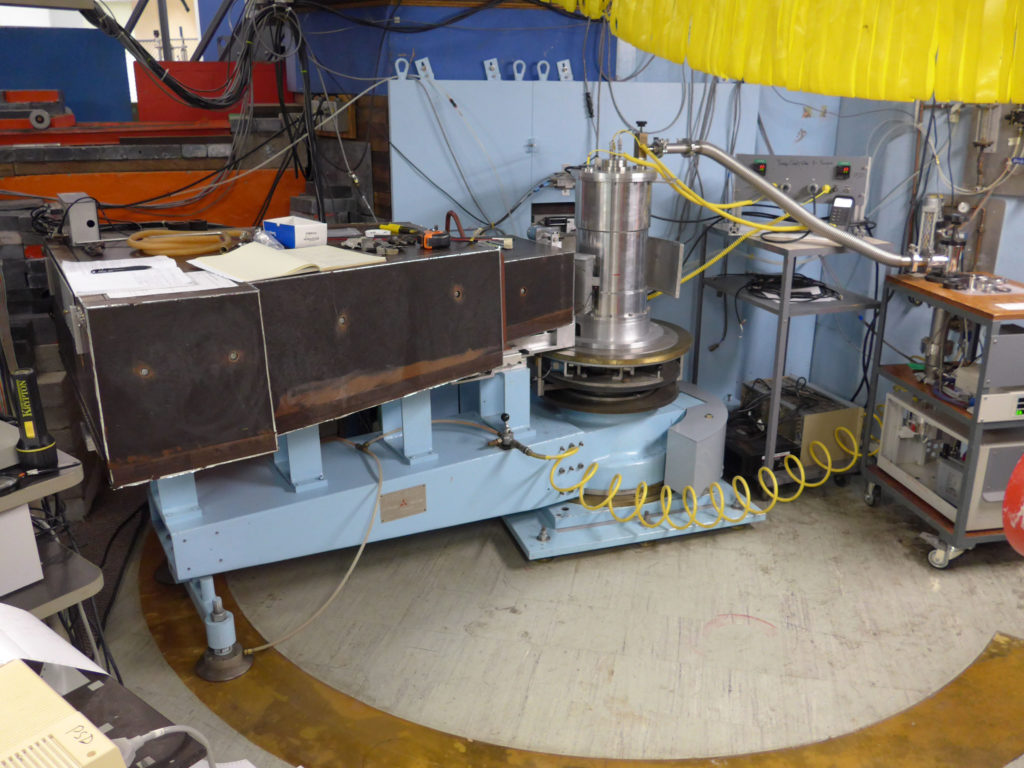The PSD powder instrument is designed to optimize the neutron flux and resolution available at a medium-sized source. The features that are primarily responsible for its resolution and intensity characteristics are the double focusing perfect crystal Si monochromator and a detector bank of five, vertically stacked linear position sensitive detectors (LPSDs). The monochromator was developed at MURR by Mihai Popovici. It uses the (511) reflection of Si so that the takeoff angle is nearly 90° and has a mosaic spread of about 2 arcmins. With this arrangement, no Soller-slit collimators before or after the sample are required. The beam is focused in both the vertical and horizontal directions by arranging the 9 Fankuchen cut Si (511) blades along a vertically curved frame and by applying a bending strain in the horizontal direction. The oscillating radial collimator limits the background neutrons coming from outside the scattering volume. The LPSDs cover an angular range of 20° so that a complete diffraction pattern of 100° is obtained by stepping the detector bank through five positions. The instrument wavelength is λ=1.485Å, which is very close to the peak of the Maxwell-Boltzmann distribution of a thermal neutron beam. The instrument has a long and productive history and has been used for exploring structural and/or magnetic phase transitions, high temperature superconductors, and colossal magnetoresistive (CMR) materials, to name a few.

- Monochromator: Double focusing bent perfect Fankuchen cut Si (511) crystal (λ=1.485 Å)
- Detectors: 5 linear position sensitive 3He tubes, 24″ sensitive length, covering 20° per detector position
- Collimation: Oscillating radial collimator
- Resolution: 1.5 x 10-3 (Δd/d)
- 2θ range: typically 5° to 105°
- Sample environment: variable temperature from 5K to 800K